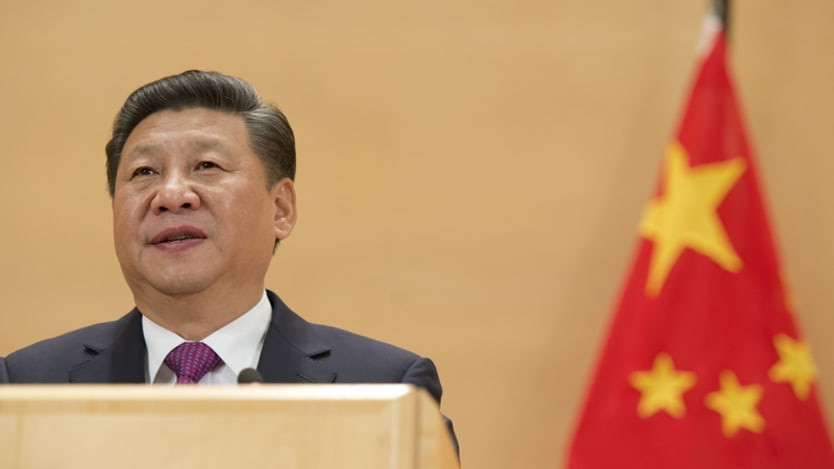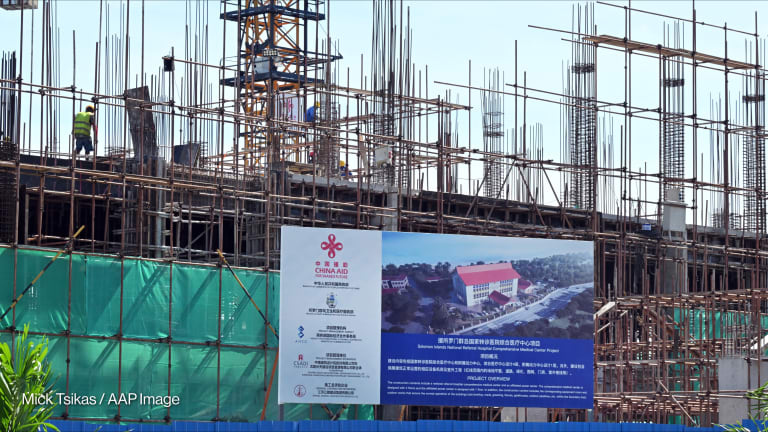
NEW YORK — China is becoming a bigger player in humanitarian aid and emergency relief, but it is still not entirely clear how much this engagement is growing, and how it is driving its work forward.
Government data on Chinese aid remains opaque and patchy, bound to just two government-issued white papers in 2011 and 2014. The more recent paper states that China has spent about $51.9 billion on foreign assistance since 1950, around the time it began to deliver what it calls “emergency humanitarian aid” to North Korea and Vietnam.
The silence is strategic, says Patrick Kilby, a senior lecturer on anthropology and development at Australian National University. Unlike many other donor countries, China also operates without one single agency to oversee its aid and development work.
See more stories on the rise of Chinese aid:
► Which Chinese companies are the big development players?
► Q&A: Chinese diplomat Li Hong on the country's 'win-win' approach to development
“I think it is a conscious decision, though there some signs of transparency with two white papers on China's' foreign aid,” said Kilby. He explained that these government papers do not provide key information on how much each recipient country has received, for example, or details on individual projects.
“China is not hiding it to be mischievous. China does not want to tell its People’s Congress what it is doing in any detail because they will worry, as in complain. They still see themselves as a poor country and I think a lot of the politicians could say, ‘Why do we give aid to these poor countries?’”
This means Kilby and other China aid experts are left to generate their own estimations on China’s humanitarian aid policies and practices, as the country’s economy and political global influence continues to expand.
“What we found most puzzling is there is just no data available on the amount [of aid delivered], on destinations, so this was our starting point,” explained Andreas Fuchs, a senior economics researcher at Heidelberg University's Alfred-Weber-Institute for Economics. “We wanted to understand where does Chinese aid flow.”
Fuchs contributed to the first global dataset of Chinese foreign aid, which research and innovation lab AidData released in October 2017, with the intention of filling an “informational black hole.” The group sorted through about 15,000 information sources and found that less than a quarter of China’s total foreign spending of $350 billion from 2000 to 2014 was comprised of official development assistance — compared to the United States, which allocated 93 percent of its spending to ODA during this time period. China’s foreign aid spending was channeled to 4,300 projects in 140 countries.
The top five recipients for Chinese aid were Cuba, Côte d’Ivoire, Ethiopia, Zimbabwe, and Cameroon.
Last month, the Overseas Development Institute released its own paper addressing the links between Chinese foreign policy and humanitarian action. While China’s humanitarian spending has increased from approximately $45 million in 2004 to more than $50 million in 2014, according to United Nations and World Bank figures, the financing can appear somewhat arbitrary, the ODI found.
China’s diplomatic interest in countries is considered the “most important” factor in guiding its aid, according to the ODI — a connection evidenced by the fact that African countries that vote with China at the U.N. get an average increase of 86 percent in aid.
—“It’s clear it [humanitarian spending] is going up. It’s also very year-on-year and it is very variable,” explained Barnaby Willitts-King, a senior research fellow at the think-tank. “There is not a predictability to it, depending on the particular crisis of the year.”
China has demonstrated a preference to respond to natural disasters — rather than “complex emergencies” — and may concentrate its funding on just one or two major crises each year, the paper shows.
For example, China’s humanitarian spending spiked to nearly $90 million in 2011, when it drove $68.5 million to the East Africa food insecurity crisis. It then dropped to less than $30 million, and down further to about $5 million in the following two years, only to shoot up again to more than $50 million in 2014, when it helped respond to the Ebola crisis with about $47 million.
“One of the things that comes out from all the studies is the data side of it. It is a barrier to our understanding, but there are also a lot of misconceptions around Chinese aid and this idea that China is just viewing [it through] a narrow, business self interest,” Willitts-King said. “Of course that is important, but there are so many other things that are driving the way China engages and understanding why it would invest in South Sudan one year, and Haiti another year,” Willitts-King said.
China’s diplomatic interest in countries is considered the “most important” factor in guiding its aid, according to the ODI — a connection evidenced by the fact that African countries that vote with China at the U.N. get an average increase of 86 percent in aid, as AidData shows.
But Beijing does also look beyond political allegiances and gains when responding to some emergencies, like the Haiti earthquake in 2011, even though the Haitian government is an ally of Taiwan, as Fuchs notes.
“It is not the case that they favor autocracies or countries with bad intuitions. According to our results, they just don’t care.”
— Andreas Fuchs, senior economics researcher, Heidelberg UniversityIn other cases, the aid is dispensed without the attachment of political or social agendas. Fuchs is not aware of any project that focuses on human rights or women, for example.
“It is not the case that they favor autocracies or countries with bad intuitions. According to our results, they just don’t care,” he said.
“The purpose of China's aid activities and aid is to win heart, it is about its reputation and of course now the changes in the U.S. administration is understood as an opportunity to increase China's influence. It is about promoting China's image around the world.”
Xiaoqing Boynton, a senior director at the global advisory group ASG, advises clients’ strategies in the China market. She expects China will continue on its trajectory of furthering its role as an international aid donor. The “real question,” is if China, still a developing country even as it boasts the world’s second largest economy, will become a net donor, giving more than it receives. China’s work in health care and innovation — sharing expertise with aid recipients and partners — is one area to watch, she says.
“I think the trajectory will continue to develop and I think China will continue to grow its aid and to grow its soft power influence in Africa, and also in places like Latin America and neighboring countries,” she said. “An area I want to watch is how China really becomes more integrated in the traditional, international donor society, with governments like the U.S. and major European donors and works to improve transparency in aid.”
Read more from our series, “The rise of Chinese aid.”








